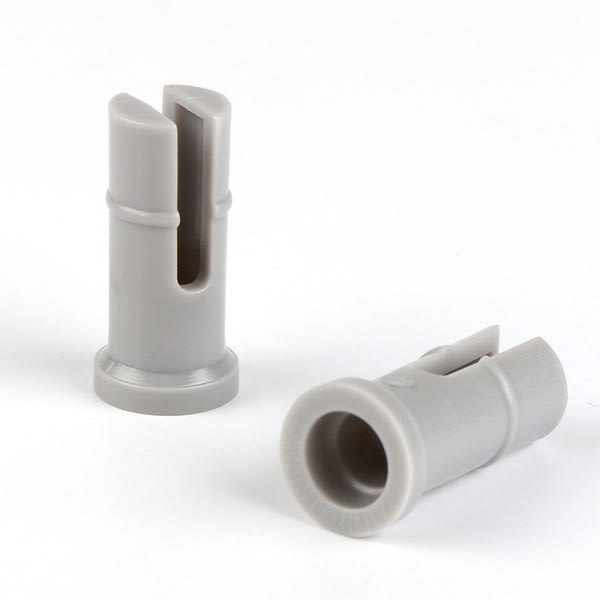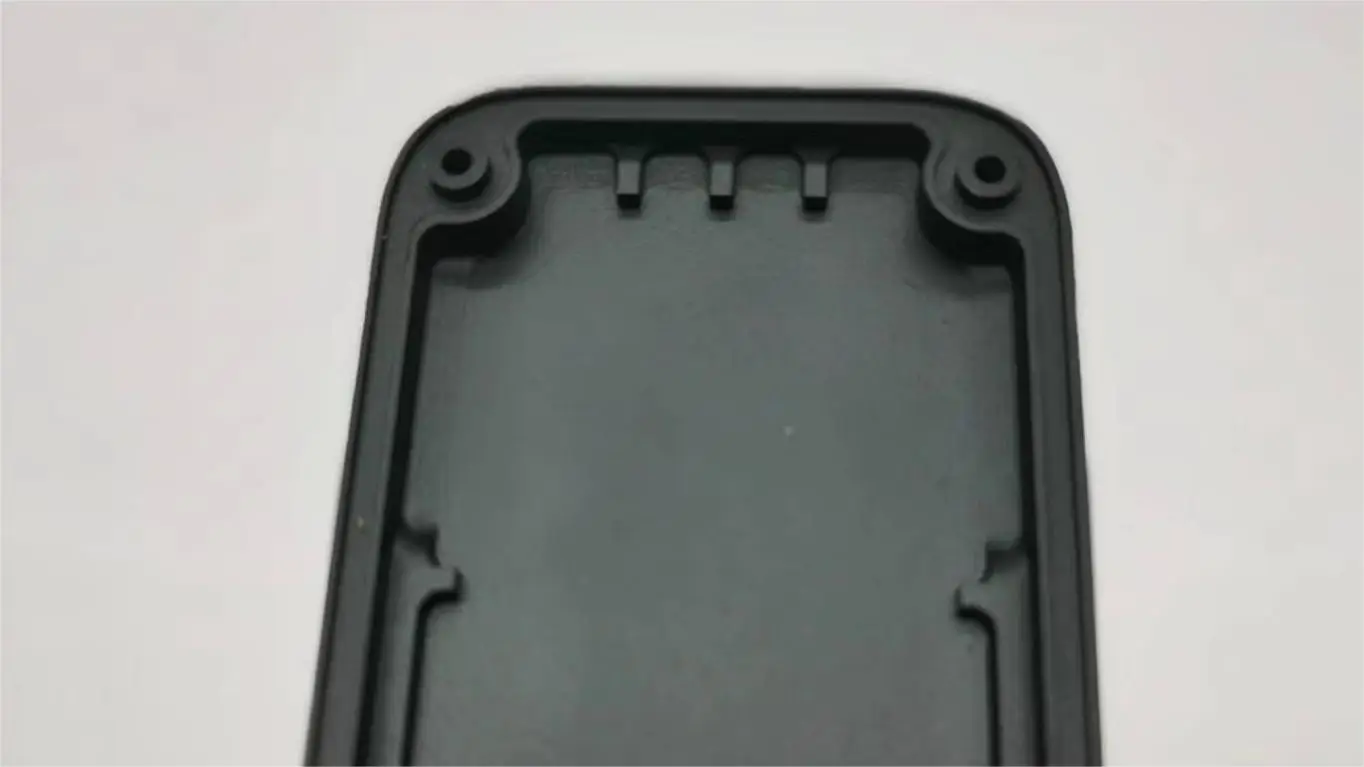Home > CNC Machining Materials > Plastics > PP
CNC Machining Materials
Polypropylene (PP) CNC Machining Services
Order precise Polypropylene pieces with us and get a high quality product. We use computer numerical control systems that result in top-notch production quality.
You will appreciate the quick turnaround and cost effectiveness of our work.
No matter whether you need medical devices, home equipment, or automotive parts, we are here to go the extra mile for you.
Make sure to ask us any questions and discuss the key points of your project.
All uploads are secure and confidential
Introduction to Polypropylene (PP)
Overall, polypropylene is a flexible plastic material.
It is tough and durable. Although it is lightweight, it has high strength.
It is used in many sectors for its characteristic of chemical and moisture resistance.
At the same time, it can be conveniently shaped and molded. It is recycled, which means that it supports an environmentally sustainable mindset.
Polypropylene is common in packaging, vehicles, and health-care devices.
It’s easy to work with, especially for CNC machining to make custom parts.

Advantages of Generic Polypropylene
Polypropylene is a popular plastic used in many industries. It is valued for its strength, as well as its flexibility and pliability.
PP is a suitable material choice for CNC machining. In CNC machining, there are various types of Polyproylene.
Homopolymer Polypropylene is produced from a monomer. HPP is rigid and strong, mainly used for rigid applications.
Copolymer Polypropylene is a combination of two monomers. It is used in products that should be tough.
Random Copolymer Polypropylene is produced with a random amount of monomers. RCPP is used in applications that require clarity and pliability.
The above types of Polypropylene are preferable in terms of machining.
The choice of material mainly depends on the nature within which the final product falls.
For instance, PP is lighter than other industrial plastics. So, shipping it costs less.
Secondly, PP is resistant to chemicals. It can withstand acids, bases, and most other substances.
PP is tough hence can be used in the service products. It is allowed to use PP in all foods, which means one may be involved in numerous types of CNC machining.
Moreover, Basic PP is low-cost, hence preferred when cutting the cost.
Lastly, PP is recyclable.
Custom Polypropylene Machining
There are several benefits of custom Polypropylene machining for specialized projects.
We can customize each part to your needs. This guarantees top performance and efficiency.
Here’s how our custom PP machining adds value to your projects.
Customization Options for Polypropylene Parts. Our custom Polypropylene machining allows for many customizations.
For example, we can make parts of many shapes and sizes. This can range from small, intricate components to giant structures.
Precision cutting ensures that everything aligns exactly as our clients desire. We also offer different finishes, from smooth to matte and textured surfaces.
Most importantly, we feature characteristics such as several holes, slots, and extreme geometries.
All our variants allow you to manufacture only one prototype, or several million parts. Benefits of Custom Machining for Specific Applications.
Custom Polypropylene machining already accords several advantages for various applications. First off, it allows for a perfect fit and efficient function.
With precision cutting, you are assured the perfect assemblage and working relationship for your parts.
As such, modifications are few and far between if any, leading to high efficiency and performance.
Additionally, it ensures that parts are more durable. Given that each component is developed to withstand its own rigors, they last much longer.
Lastly, the customization ensures you get a product of superior quality. Not only do the products fit, but they also precisely do what they were assigned to do.
This is most useful for industries that value precision and reliability. These include medical, cars, and consumer electronics.
PP Properties
| Ultimate tensile strength | Yield strength | Young’s modulus (modulus of elasticity) | Elongation at break | Hardness | UV resistance | Application | ||
| PP | 23 – 33 MPa | 30 – 32 MPa | 0.9 – 1.6 GPa | 8 – 12 % | 65 – 102 HRR | Poor | Packaging Consumer products Medical applications | Learn More |
| PP+GF(30%) | 68 – 85 MPa | 6.5 – 7 GPa | 2.1 – 3.4 % | 110 HRC | Fair | Pumps & valves Gaskets | Learn More | |
| PP Homopolymer | 19 – 30 MPa | 0.7 – 1.2 GPa | min. 50 % | Chemical technology Piping Packaging | Learn More |
PP CNC Machining Surface Finishes

As Machined

PP+30%GF
As Machined

Laser Engrave
PP CNC Machining Gallery
Cost-saving Design Tips
Cost-effective CNC Machining of Polypropylene
Polypropylene is a material that is easy to machine. It is used in CNC machining. This is because it is one of the cheapest materials and so very cost-effective.
To keep costs low, manage machining and post-processing time. Also, follow standard tolerances for plastic and composite machining for better results.
For polypropylene, maintain a tolerance of +/- 0.010’’ in size and position.
Benefits of Polypropylene
CNC machines often cut polypropylene. It is cheap and multipurpose.
Every day, people rely on it more. It is a lightweight and tough polymer. It resists many chemicals and is strong.
But, it’s hard to shape. This makes it popular in various industries like automotive and consumer goods. Its low melting point makes it cheaper to machine.
Managing Heat and Preventing Warping
One of the challenges of machining polypropylene is the thermoplastic’s heat sensitivity. High levels of heat can cause the plastic to melt, as well as warp its shape.
The recommended tools are coolants, a constant flow of which should be used during material cutting. Alternatively, employ sharp cutting tools to facilitate only small amounts of heat.
It is also better to machine with the lowest possible feeds and speeds.
Optimizing Machining Time
Keep machining times down. Machining costs depend on the time a machine spends machining. The less time your parts need on the CNC, the cheaper they are.
To do that, keep your parts simple. Don’t use overly complex geometries that require multiple setups. Don’t use specialized tooling that requires time to bring in and calibrate on the machine.
Build your parts from components. They can be machined in a single setup or with few tool changes. This will cut machining time and errors.
So, you’ll spend less time fixing your parts and checking with your metrology gear.
Post-Processing Considerations
Post-processing is another area where time and costs can add up. Polypropylene parts often require deburring and finishing to remove rough edges and achieve the desired surface finish. Using automated deburring tools can speed up this process. If the parts require additional treatments, such as polishing or coating, plan these steps carefully to integrate them smoothly into the production workflow.
Importance of Standard Tolerances
Standard tolerances for size and location features are set to +/- 0.010”. This precision ensures parts meet quality standards and minimizes extra machining. It’s vital for plastics.
These materials can be cut at high temperatures, which speeds up the process and avoids surface prep. However, temperatures above 300°F are not advised for untreated metals.
It’s also important to follow standard tolerances. Tighter ones can significantly raise machining costs. Yet, sticking to these standards ensures a precise fit and function without extra expenses.
You may want to know
Material Challenges
Polypropylene, a thermoplastic, tends to deform or melt during CNC machining, complicating processing. Its low melting point makes it susceptible to warping or melting under cutting tool heat.
To mitigate, use sharp tools, slower speeds, and coolant application. Polypropylene’s softness compromises precision. But, high-quality, sharp tools, like those made of carbide or coated in diamond, help.
Achieving tight tolerances is challenging due to its deformability. Standard tolerances of +/- 0.010” balance precision and manufacturability.
Effective cooling and lubrication prevent overheating. Adjusting cutting parameters optimizes machining. Secure clamping prevents movement and damage.
Post-machining, deburring and polishing refine surface quality.
Cost Considerations
Polypropylene is cheap. But, it can be costly to machine. This is especially true if one needs to make many precise or complex parts.
First, machining requires special tools and coolants. These ensure accuracy and prevent overheating.
Second, making complex parts takes more time and resources. This raises costs. More features and detail require more time to machine.
In order to keep low costs, it is necessary to perform machining effectively. It means that tool paths need to be planned accurately, and material waste needs to be minimized.
We should optimize cutting parameters.This will maximize the speed of removing material. Also, one needs to pick a good part machining strategy.
Using a turning technique for oddly shaped parts can make turning take longer and cost more. It’s smart to explore alternative production methods.
For example, companies can choose between injection molding and 3D printing to cut costs. Then, they must decide the desired benefits and whether the costs are worth it.
Surface Quality
After machining, polypropylene is not as tough or smooth as plastics like polycarbonate or ABS. It often turns out fuzzy or rough.
These imperfections need post-processing to fix. For example, deburring or sanding can smooth over burrs. However, sometimes these methods aren’t enough.
In such cases, polishing or coating is necessary. Thus, post-processing is crucial to enhance the part’s surface quality.
This process is crucial. It ensures the surface finish of a part matches its needed durability. Different plastics suit various uses.
So, it’s vital for polypropylene parts to have good surface quality. Planning post-processing in the design and process planning steps ensures this.













